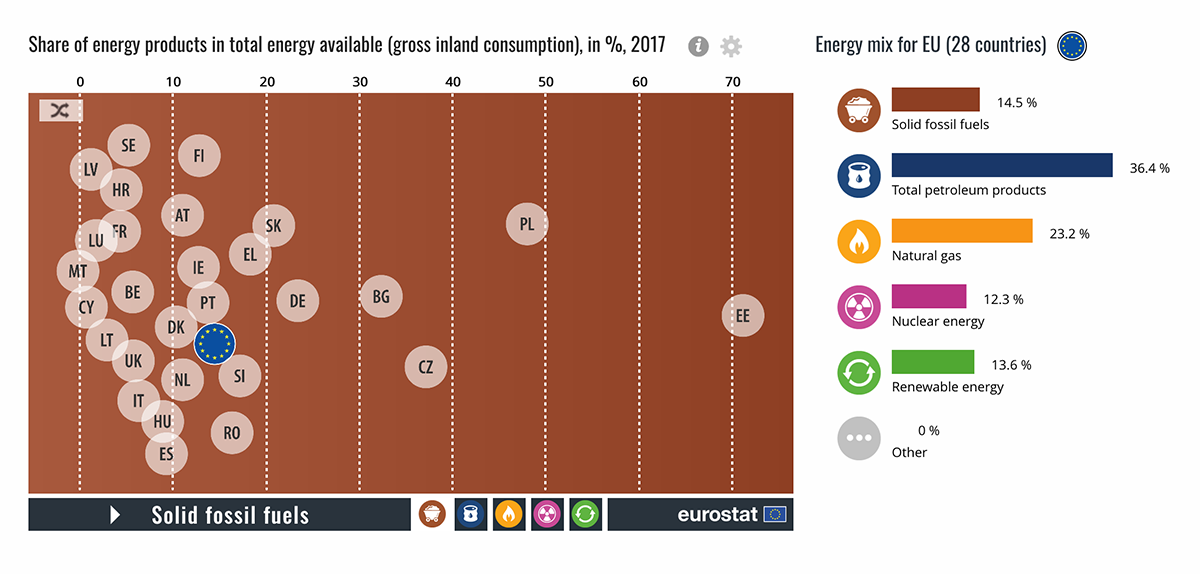2.1 Where does our energy come from?
The energy available in the European Union comes from energy produced in the EU and from energy imported from third countries. In 2017, the EU produced around 45 % of its own energy, while 55 % was imported.
Imports and production form together the sources of energy available in the EU
In order to get a good overview of the total energy available in the EU, energy production should always be put in context with imports.
In 2017, the energy mix in the EU, meaning the range of energy sources available, was mainly made up by five different sources: Petroleum products (including crude oil) (36 %), natural gas (23 %), solid fossil fuels (15 %), renewable energy (14 %) and nuclear energy (12 %).
The shares of the different energy sources in the total energy available vary considerably between Member States. Petroleum products (including crude oil) account for a significant share of total energy available in Cyprus (93 %), Malta (88 %) and Luxembourg (64 %), while natural gas makes up just over a third in Italy, the Netherlands and the United Kingdom. Almost three quarter of energy available in Estonia (71 %) and just below half in Poland (48 %) comes from solid fossil fuels, while nuclear energy accounts for 40 % in France and 31 % in Sweden. Renewable energy makes up 40 % in both Latvia and Sweden.
